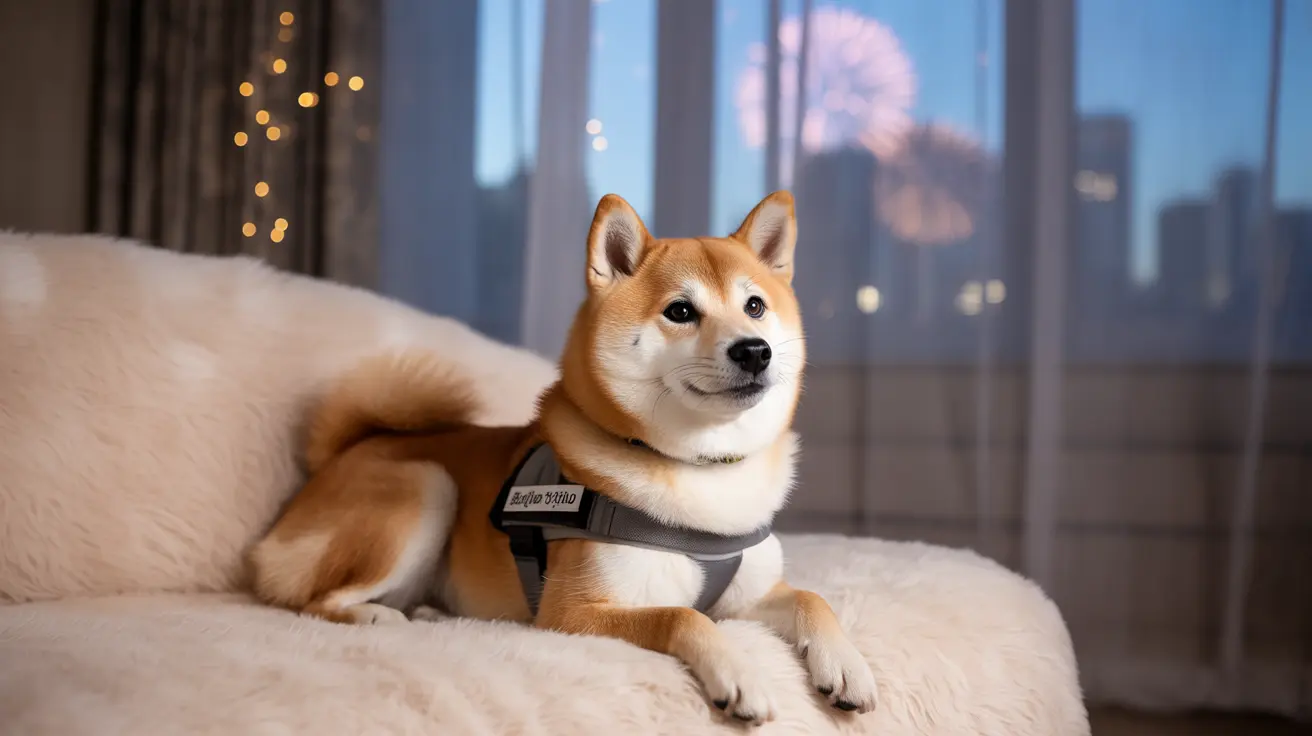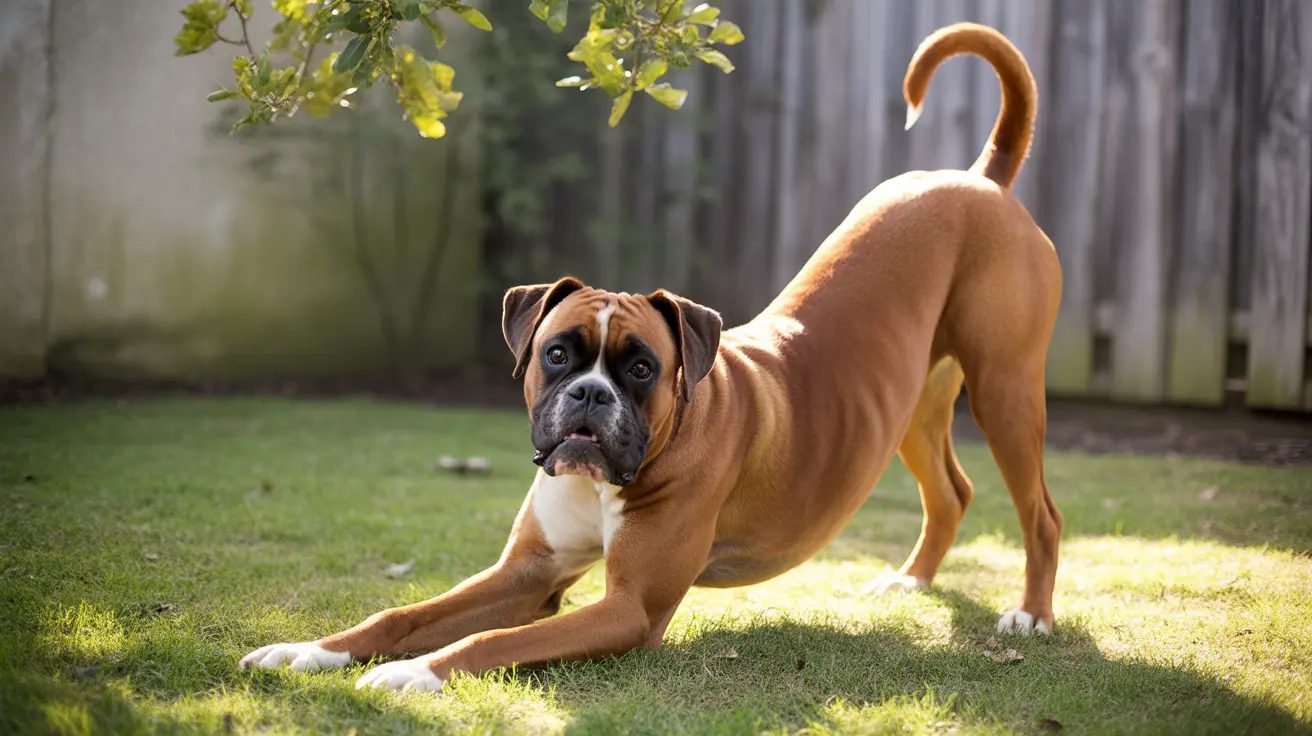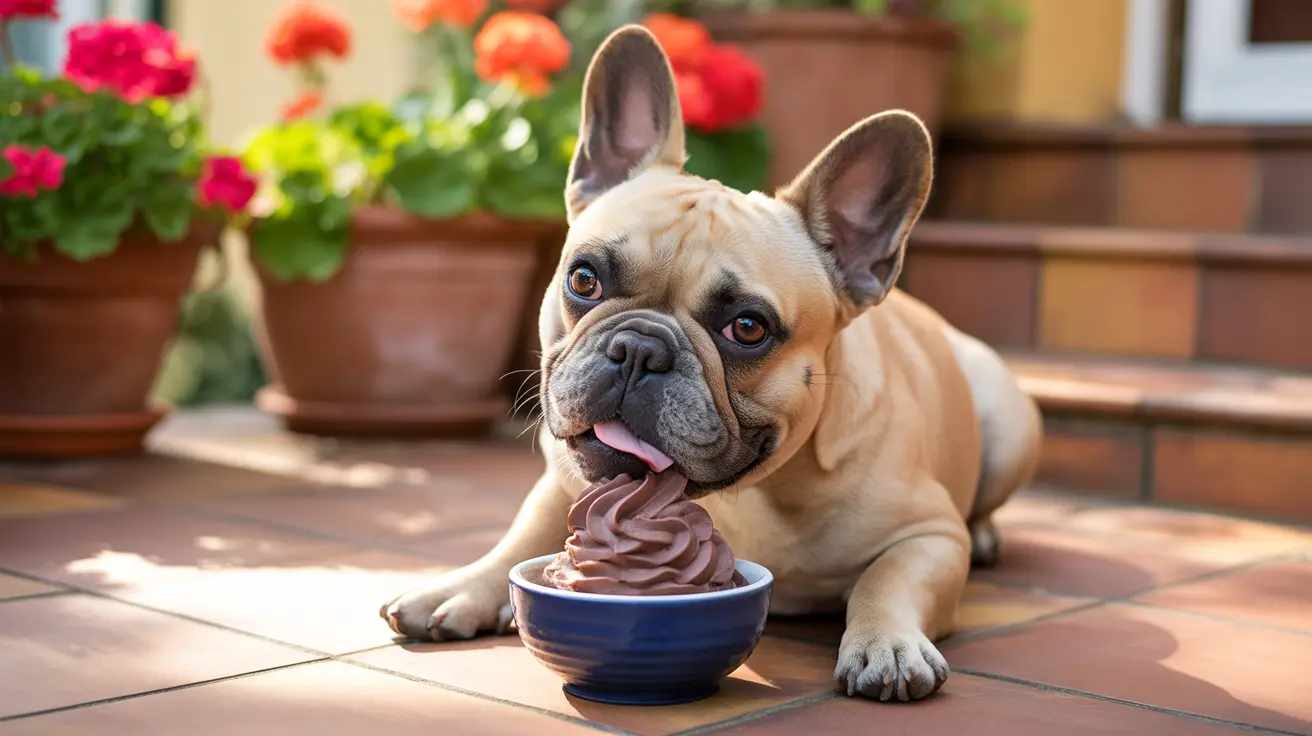How to Calm Dogs During New Year's Eve Fireworks: Expert Strategies for Anxious Pets
New Year's Eve celebrations bring joy to humans, but for millions of dogs across America, the explosive sounds of fireworks create a night of terror and anxiety. Calming dogs during New Year's Eve fireworks requires understanding, preparation, and the right combination of techniques tailored to your pet's specific needs. Dogs experience fireworks anxiety due to their highly sensitive hearing and evolutionary survival instincts that interpret loud, unpredictable noises as threats.
The fear response triggered by fireworks isn't simply a behavioral quirk that dogs can "get over" – it's a genuine phobia rooted in brain mechanisms designed for survival. Many dogs develop noise phobias, experiencing irrational fear that manifests through hiding, trembling, pacing, whining, barking, drooling, and excessive panting. Fortunately, with proper preparation and proven strategies, you can significantly reduce your dog's distress and help them navigate this challenging time with greater comfort and security.
This comprehensive guide will equip you with expert-backed methods for calming dogs during New Year's Eve fireworks, from advance preparation techniques to immediate comfort strategies that can transform your pet's experience during the holiday celebration.
Understanding Why Dogs Fear Fireworks
Dogs' heightened sensitivity to sound makes fireworks particularly traumatic for them. Their hearing range extends far beyond human capabilities, allowing them to perceive higher frequency sounds that we cannot detect. This enhanced auditory sensitivity means that fireworks don't just sound loud to dogs – they can be overwhelmingly intense and physically uncomfortable.
The fear response to fireworks stems from evolutionary survival mechanisms built into dogs' brains. These loud, unpredictable noises trigger the same neurological pathways that would alert wild animals to danger, such as predators or natural disasters. Unlike learned behaviors, this fear response cannot simply be "switched off" through willpower or training alone.
Certain breeds show greater predisposition to noise anxiety, including Norwegian Buhunds, Lagotto Romagnolos, and Wheaten Terriers, though mixed breeds can be equally susceptible. Understanding that your dog's fear is a legitimate physiological response helps you approach the situation with empathy and effective intervention strategies.
Sound Desensitization Training: Building Confidence Before the Event
The most effective long-term strategy for calming dogs during New Year's Eve fireworks involves sound desensitization training, which should ideally begin several months before the anticipated fireworks events. This behavioral modification technique teaches dogs to associate fireworks sounds with positive experiences rather than fear.
Begin desensitization by playing recordings of fireworks sounds at extremely low volumes while engaging your dog in enjoyable activities. Pair these quiet sound exposures with high-value treats, praise, and calm, positive interactions. The key is maintaining a volume so low that your dog notices the sound but doesn't exhibit anxiety symptoms.
Gradually increase the volume over multiple training sessions, always monitoring your dog's comfort level. If your dog shows signs of stress at any volume, reduce the sound and spend more time at that level before progressing. This counterconditioning process helps dogs learn that fireworks sounds predict good things rather than threats, building confidence and reducing anxiety responses over time.
Creating the Perfect Safe Space
Providing a comfortable, secure retreat satisfies dogs' natural instinct to seek shelter during stressful situations. The ideal safe space should be a quiet area inside your home, preferably an interior room with minimal windows to reduce both noise and visual stimulation from flashing lights.
A crate covered with blankets can serve as an excellent refuge, but only if your dog is already comfortable with crate training. Never confine a highly distressed dog in a crate without supervision, as panic can intensify if they feel trapped. Instead, focus on creating an open but cozy space with familiar toys, bedding, and items that carry your scent.
Consider setting up this safe space in a basement or interior closet where sound is naturally muffled. Include comfort items like your dog's favorite blankets, toys, and perhaps a piece of your clothing to provide reassuring familiar scents during the stressful period.
Pressure Wraps and Anxiety Vests: Science-Based Comfort
Pressure wraps and anxiety vests apply gentle, constant pressure to dogs' torsos, similar to swaddling techniques used to calm human infants. These garments work by stimulating pressure points that can reduce anxiety and provide a sense of security during stressful events.
Research suggests that pressure garments show effectiveness in approximately 80% of dogs experiencing anxiety. The gentle compression may trigger the release of calming neurotransmitters while providing a comforting sensation that helps dogs feel more secure.
For optimal results, apply the anxiety wrap or vest approximately 30 minutes before fireworks begin and remove it afterward. Avoid excessive petting or attention while your dog wears the garment, as overstimulation can counteract the calming effects. Allow your dog to move freely and settle naturally while wearing their pressure wrap.
Environmental Modifications for Maximum Comfort
Controlling your dog's immediate environment can significantly reduce the impact of fireworks noise and visual disturbances. Close all curtains and blinds to block flashing lights from fireworks, which can add to your dog's anxiety when combined with loud sounds.
Create background noise to help mask fireworks sounds by playing classical music, white noise, or specially designed pet radio programs. These consistent, calming sounds can help muffle the unpredictable crashes and booms of fireworks while providing a more soothing auditory environment.
Some pet owners find success with sound devices that emit specific calming frequencies designed for dogs. Additionally, maintaining normal lighting in your safe space helps prevent the startling effect of sudden flashes from outdoor fireworks displays.
Exercise and Mental Stimulation Strategies
Physical and mental exercise before fireworks events can significantly reduce your dog's stress levels and reactivity. A well-exercised dog is more likely to rest calmly during fireworks rather than pace anxiously or remain hypervigilant.
Schedule an extended walk, play session, or training activities earlier in the day, well before fireworks typically begin. Mental stimulation through puzzle toys, training exercises, or new tricks can be equally tiring and help redirect your dog's focus away from external stressors.
During the fireworks themselves, provide long-lasting distractions such as frozen treats, puzzle feeders, or durable chew toys. These activities engage your dog's attention and can help them cope with anxiety while giving them something positive to focus on instead of the frightening sounds outside.
Calming Supplements and Natural Remedies
Various calming supplements and natural remedies can support your dog's ability to cope with fireworks anxiety when used appropriately. Options include L-theanine, tryptophan, colostrum, and melatonin, though veterinary consultation is recommended before introducing any new supplements to your dog's routine.
Pheromone diffusers and collars containing dog appeasing pheromones may help reduce anxiety by mimicking the calming scents mother dogs produce for their puppies. These products can be particularly effective when used in combination with other calming strategies.
Some natural calming aids show promise, but it's crucial to test any new products well before New Year's Eve to ensure they're effective for your individual dog and don't cause adverse reactions. Never assume that natural equals safe – always research proper dosages and potential interactions with your dog's existing medications or health conditions.
When to Seek Veterinary Support
Severe cases of fireworks anxiety may require professional veterinary intervention, particularly if your dog's fear responses interfere with their quality of life or pose safety risks. Veterinarians can prescribe anxiety medications specifically designed to reduce panic before stressful events.
Medications that have shown effectiveness for fireworks anxiety include trazodone, alprazolam, clonidine, clomipramine, and gabapentin, as well as approved products like Sileo gel. These pharmaceutical interventions can be particularly valuable for dogs with extreme phobias that don't respond adequately to behavioral and environmental modifications alone.
Avoid sedatives like acepromazine, which can paralyze dogs without reducing their anxiety, potentially worsening panic responses. Work with your veterinarian to develop a comprehensive treatment plan that may include both medications and behavioral strategies for the best outcomes.
Supporting Your Dog During the Event
Your behavior and emotional state during fireworks significantly influence your dog's anxiety levels. Remain calm and act normally rather than becoming overly concerned or frantic, as dogs can pick up on and mirror their owners' stress levels.
Offering gentle comfort through quiet voice tones, calm petting, and reassuring presence can help reduce your dog's distress without reinforcing fear behaviors. Contrary to some outdated advice, providing comfort to a frightened dog does not reinforce their fear – it offers genuine emotional support during a genuinely stressful situation.
Consider engaging your dog in calm training exercises or gentle play if they're receptive, as these activities can provide positive distractions and help them focus on something other than the frightening sounds outside.
Safety Considerations and Escape Prevention
Fireworks can trigger panicked escape attempts, making it crucial to ensure your dog's identification is current and secure. Check that collar tags are legible and up-to-date, and verify that microchip information is current with your contact details.
Never leave dogs unsupervised outside during fireworks events, and avoid taking them to fireworks displays where the noise and crowds can be overwhelming. Schedule necessary bathroom breaks and meals before nightfall to minimize your dog's need to go outside during peak fireworks hours.
Keep dogs securely indoors and consider using baby gates or other barriers to prevent them from bolting toward doors if they become panicked. Even well-behaved dogs can exhibit unpredictable behavior when extremely frightened.
Building Long-Term Resilience
Successful management of fireworks anxiety often requires ongoing commitment beyond just New Year's Eve. Maintain regular training sessions throughout the year, continuing to expose your dog to controlled sound levels to build long-term habituation and confidence.
For dogs with severe anxiety, consider working with veterinary behaviorists or professional trainers who can develop customized behavioral programs. These experts can provide specialized techniques and medications to address your dog's specific needs and help prevent the anxiety from worsening over time.
Document what strategies work best for your dog each year, refining your approach based on their responses and changing needs as they age or their anxiety levels shift.
Frequently Asked Questions
Q: How far in advance should I start preparing my dog for New Year's Eve fireworks?
Ideally, begin sound desensitization training several months before New Year's Eve for best results. However, even a few weeks of preparation using environmental modifications, safe spaces, and calming products can make a significant difference in your dog's comfort level.
Q: Can I give my dog Benadryl to calm them during fireworks?
While some antihistamines like Benadryl can provide mild sedation, they are generally less effective for fireworks anxiety alone and should only be used under veterinary guidance. More targeted anxiety medications or natural calming aids are typically more effective for this specific type of fear.
Q: Should I crate my dog during fireworks if they usually like their crate?
A covered crate can provide an excellent safe refuge for dogs who are already comfortable with crate training. However, never confine a highly distressed dog in a crate without supervision, as panic can intensify if they feel trapped. Monitor your dog's comfort level and provide the option to leave the crate if needed.
Q: Will comforting my scared dog reinforce their fearful behavior?
No, providing gentle comfort and reassurance to a frightened dog does not reinforce fear behaviors. Supporting your dog with calm petting, quiet voice, and presence can actually help reduce their distress. The key is remaining calm yourself and avoiding frantic or overly excited responses.
Q: What should I do if my dog tries to hide under furniture during fireworks?
Allow your dog to seek their preferred hiding spot, but try to make it more comfortable by adding blankets or familiar items nearby. Don't force them out of their chosen refuge – respecting their instinct to find a secure space can actually help reduce their anxiety.
Q: Are there any home remedies I should avoid when trying to calm my dog?
Avoid giving your dog any human medications, alcohol-containing substances, or unresearched home remedies without veterinary approval. Stick to proven methods like environmental modifications, proper exercise, and veterinarian-approved calming aids rather than experimenting with potentially dangerous substances.
Q: How do I know if my dog's fireworks anxiety requires professional help?
Seek veterinary or professional behavioral help if your dog's anxiety significantly interferes with their quality of life, causes destructive behavior, leads to escape attempts, or doesn't improve with basic calming strategies. Severe cases may benefit from prescription medications or specialized behavioral therapy programs.
Calming dogs during New Year's Eve fireworks requires patience, preparation, and a multifaceted approach tailored to your individual pet's needs. By combining sound desensitization training, environmental modifications, physical comfort measures, and appropriate calming aids, you can significantly reduce your dog's anxiety and help them navigate this challenging time with greater ease. Remember that every dog responds differently to various strategies, so be prepared to adjust your approach based on what works best for your furry companion. With consistent effort and the right combination of techniques, you can transform New Year's Eve from a night of terror into a manageable event for both you and your beloved pet.






